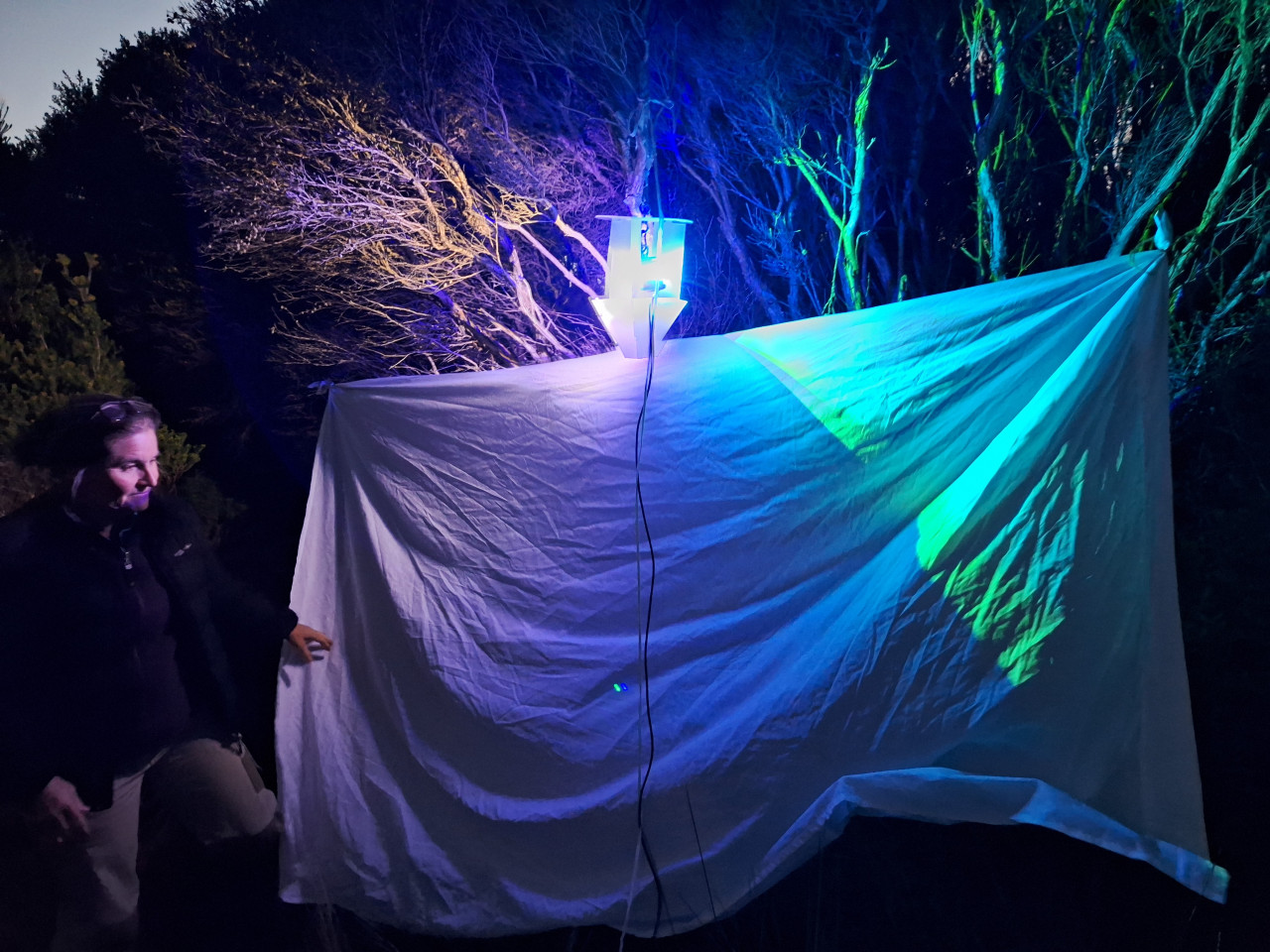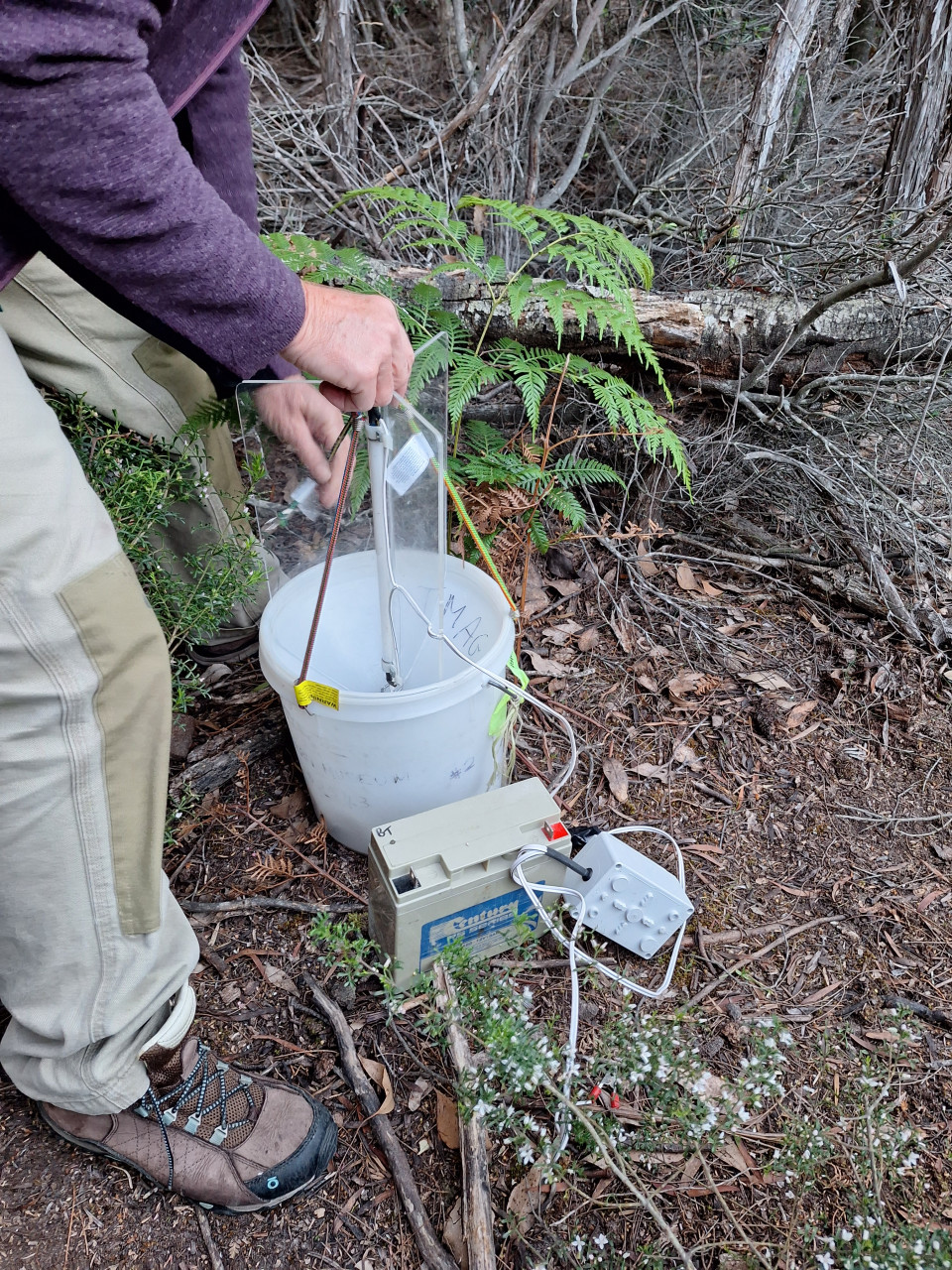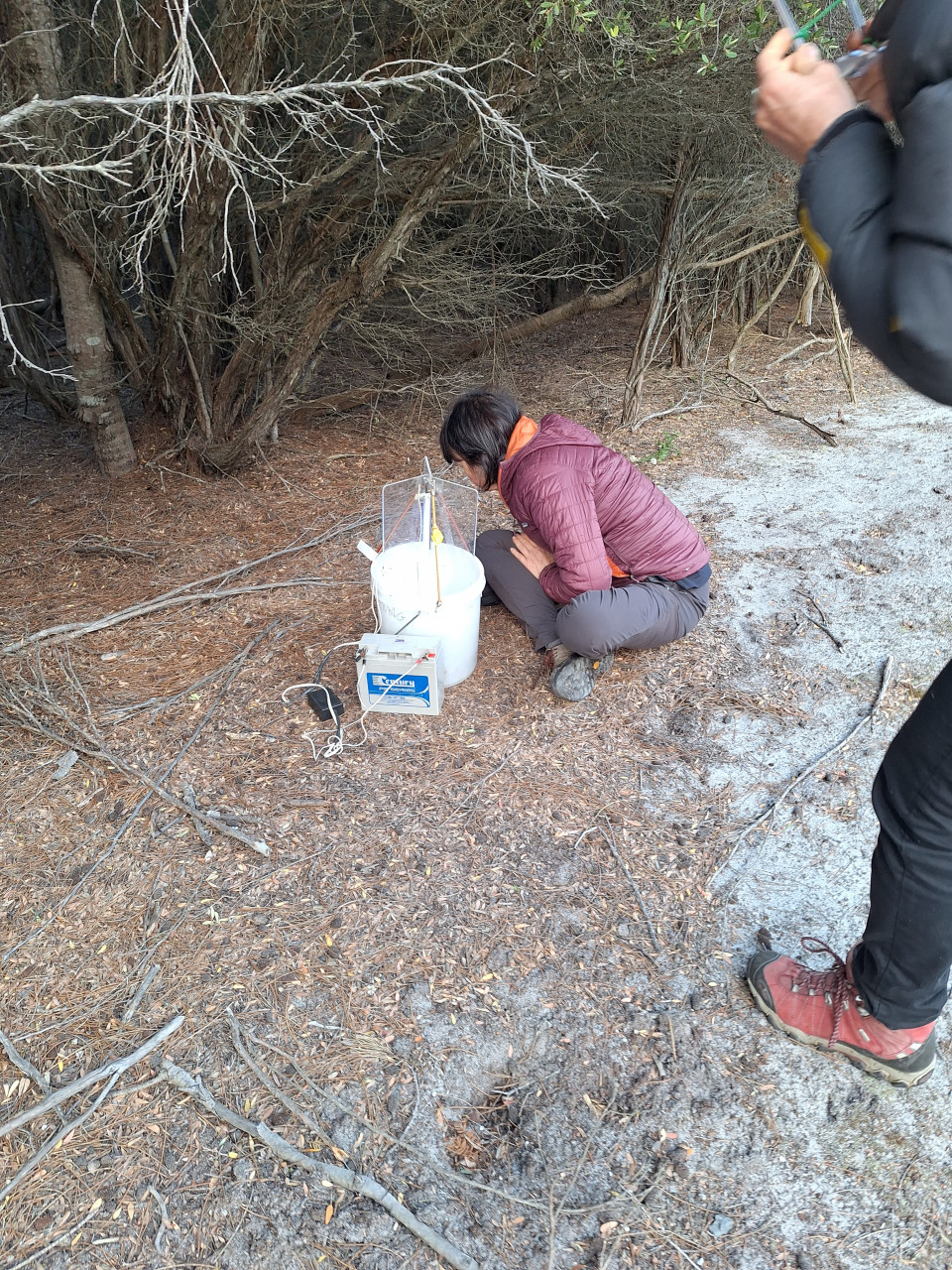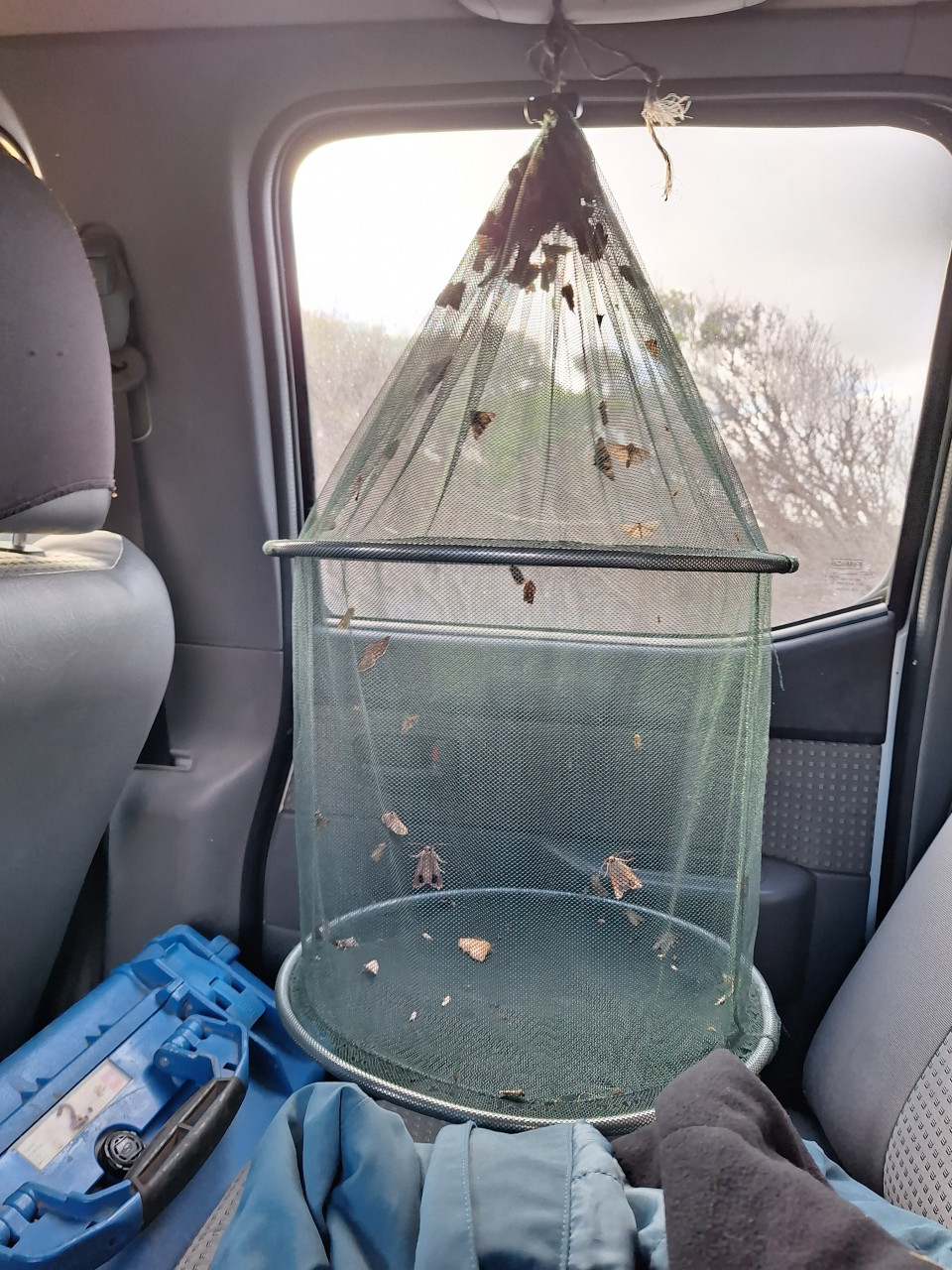Moths - Nocturnal Pollinators
Butterflies are beautiful, sure. But have you had a close up look at moths. Not necessarily those gigantic ones that sometimes scare people, or the ones that are terrible for crops, but those teeny, tiny ones that sit on the leaves of plants. They are incredible! When viewed under a microscope, they shimmer. Scientist Cathy explained that the shimmering effect is scales on their wings and body. And catching them, well, that's the fun part.
The team raced through dinner to head out to the north of the island to set our traps. We were worried that it might be too windy, but we gave it a go. First stop was setting the three bucket traps with their individual UV light and battery pack. They are set in the forest and left overnight. Note to self, when setting traps in the forest, make sure you take a GPS reading and leave a brightly coloured marker by the roadside on a tree.
Then it was on to the final site of the night where we set up the UV light and backdrop to hand catch some moths. Cathy explained that moths are attracted to the UV light and when they come towards it, like to sit and rest on something. We were able to bottle up the few that landed briefly on the backdrop, but the wind got the better of us. The team decided to leave a net attached to the UV light and catch any moths that might be attracked during the night.
After a short few hours sleep, we went to collect the traps to see how many moths we were able to catch overnight. Cathy and the team then processed the collection ready to take back to the museum. I'm going to attempt to pin a moth but I suspect my attempts won't ever be as good as the experts.
When you subscribe to the blog, we will send you an e-mail when there are new updates on the site so you wouldn't miss them.





